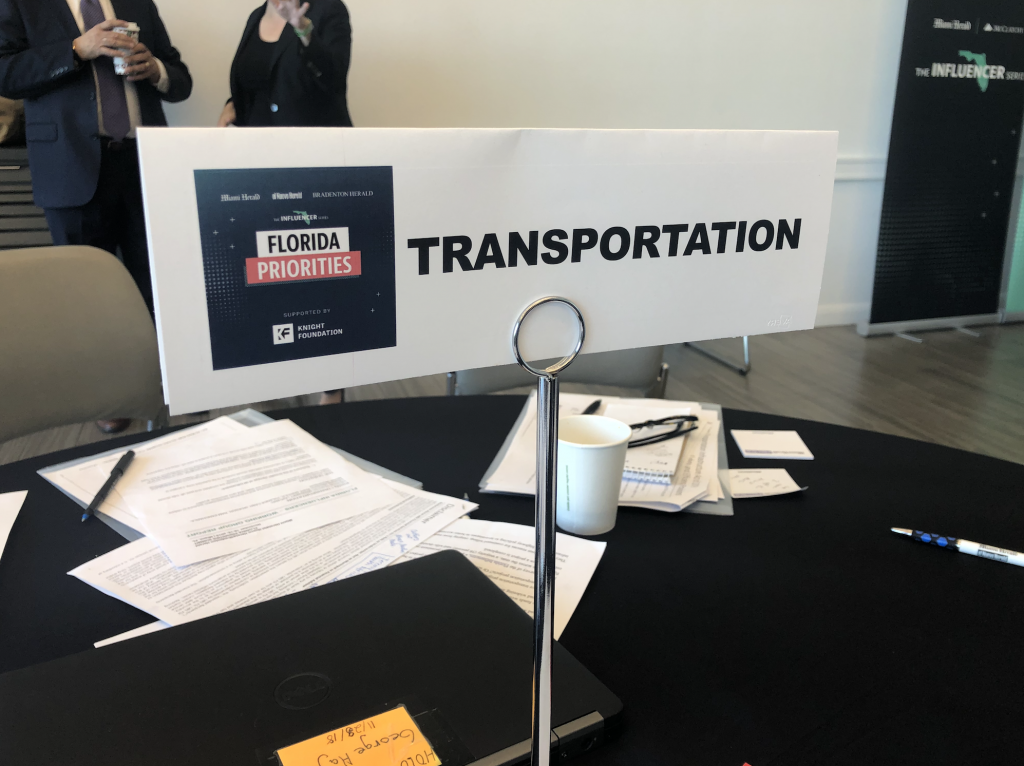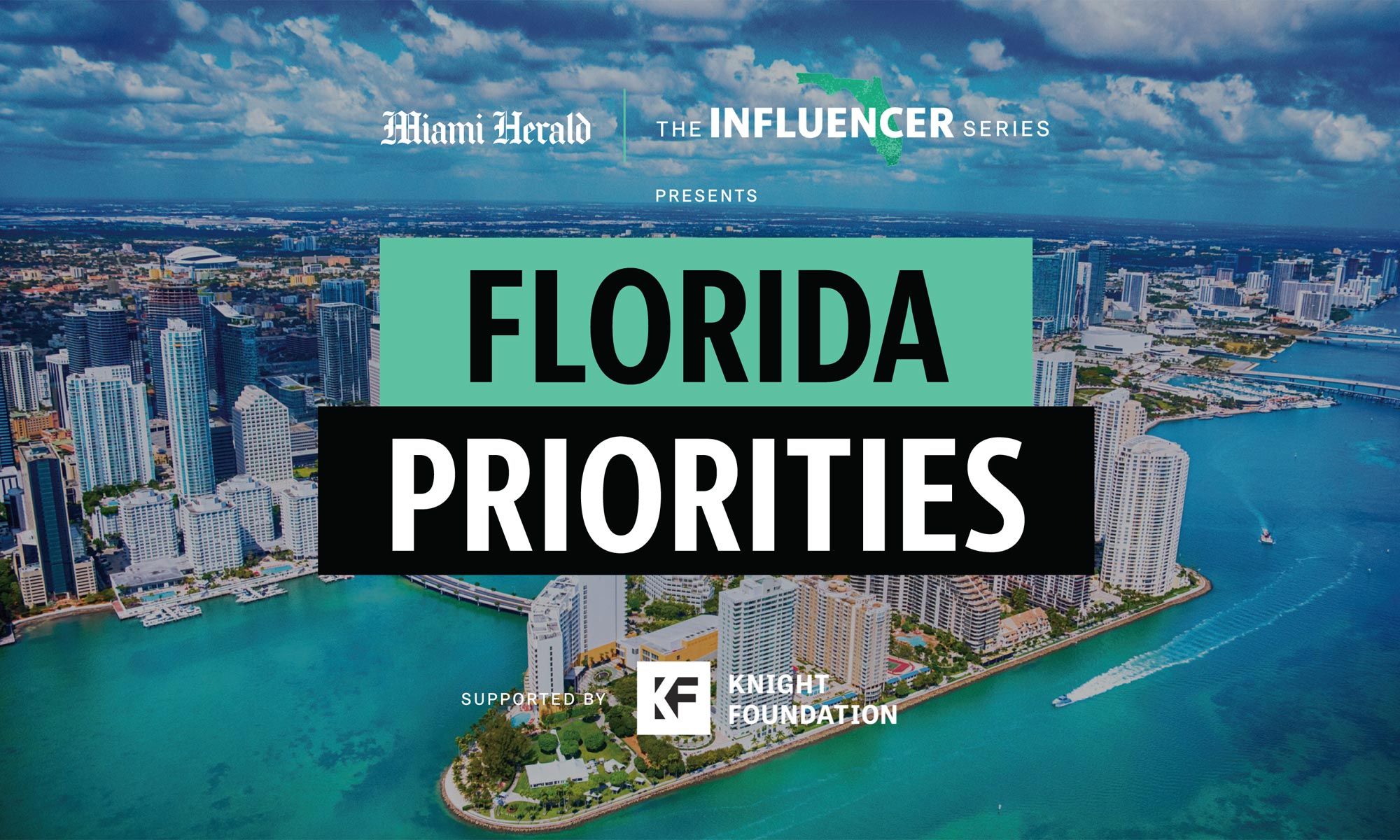By Ana Escalante
The Alligator / University of Florida
Eddy Arriola was tired of sitting in Miami morning traffic on his commute from Coral Gables to Apollo Bank in Brickell— so he now walks to the University of Miami station on Miami-Dade County’s Metrorail.
Arriola said that lack of funding and urban planning are contributing to the growing problem that plagues mass-transit: the focus on fixing the now, rather than planning for the future.

At the second-annual Florida Priorities Summit — a panel hosted by the Miami Herald, El Nuevo Herald and Bradenton Herald — 50 influential Floridians discussed statewide issues, including transportation. Solutions brainstormed at the summit will be presented to the Florida Legislature when session resumes in January.
Arriola said the “innovative” Metrorail provides a cheaper, cleaner way to get to his job. Since hopping on the train, he’s persuaded the rest of his employees to follow suit.
“Big, expensive roads take a long time to build and they may not address the issues down the line,” Arriola said.
Arriola, Margaret Lezcano, Ram Kancharla and Marie Woodson came together Monday to tackle public transits’ inefficiency problem in a round-table discussion during the first day of the two-day summit at University of Miami.
Although transportation includes multi-modal systems including buses, trains, and ships, the four influencers brainstormed solutions aimed at the bigger picture: They want to raise awareness of the benefits of public transportation and make sure Florida keeps its growing population in mind when building these systems.
Marie Woodson, a retired Miami-Dade public administrator, believes inclusive education programs created in English, Spanish and Creole will inform people about the benefits of using mass transportation like buses and trains.
Awareness is one of the points on her platform during her current run for a House District 101 seat.
“We need to make it more user friendly, as well as cost effective,” Woodson said. “If they don’t see the benefits of it, they won’t use it.”
A growing population in urban centers like South Florida is leading to an increased need for urban planning when it comes to creating transportation systems, Woodson said. Census data shows Miami-Dade County grew by about 10.5 percent.
Florida’s legislature should focus on plans that keep future populations in mind, she said, rather than quick, cheaper short-term solutions.
“If we don’t come up with solutions, we’re leaving problems for young people,” she said.
Exponential population growth isn’t just a problem for large-scale urban areas though. Growing demographics in college towns, like Gainesville, where the University of Florida is located, may present a challenge for local transportation services.
Since 2010, Gainesville’s population grew 7.7 percent and Alachua County grew by 9.1 percent, according to Census data. The local bus service, Regional Transit System, or RTS, provides service throughout the city.
RTS buses calculate the number of passengers that get on and off at every stop, Shelby Taylor, Gainesville’s city communications director, wrote in an email. This data then drives the implementation of additional routes around the city due to demand.
About half the expanded routes in Gainesville service students in and around UF and nearby Santa Fe College, based on city’s transit website.
Although the needs of Miami-Dade may be different from the needs of Gainesville, Eddy Arriola emphasized that public transportation’s inefficiency problem is a statewide one.
“A consistent take-away is that in order for the state to advance, we really need to think of ourselves as a state that works together,” he said. “We’re not just Tampa, we’re not just Gainesville, we’re a unified community.”
